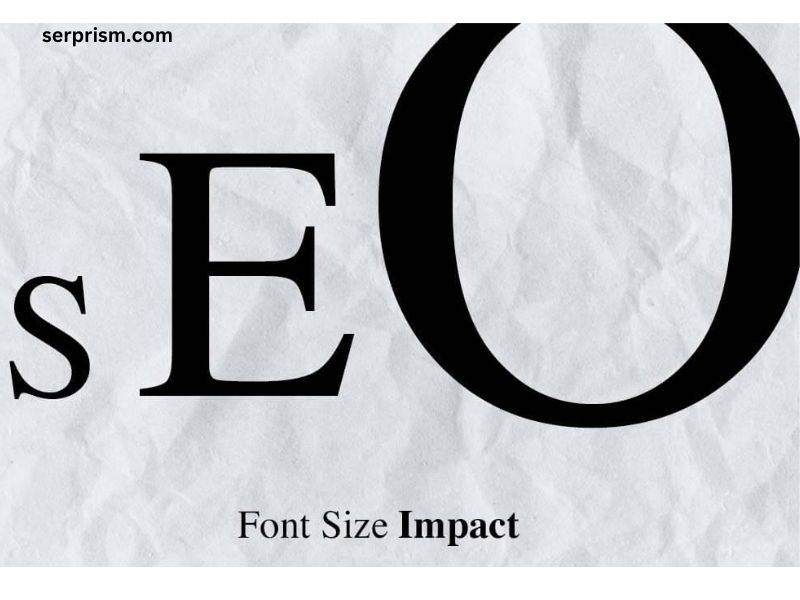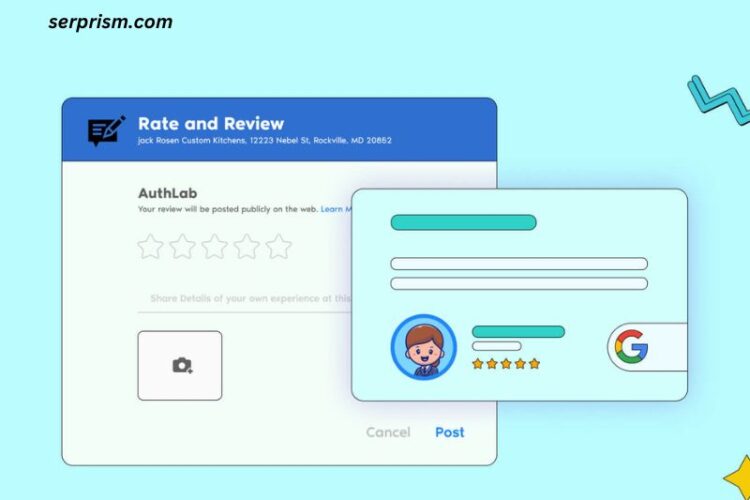
As a brand strategist, I firmly believe that typography plays a pivotal role in shaping a brand’s identity and ensuring its success in the digital landscape. In today’s world, where consumers are bombarded with countless visual stimuli, it’s crucial to leverage the power of typography to create a lasting impression and establish a strong online presence. Optimizing typography for Search Engine Optimization (SEO) is a game-changer, enabling brands to not only captivate their audience but also improve their visibility and rankings on search engines.
Typography is more than just a collection of letters and symbols; it’s a powerful tool that can evoke emotions, convey personality, and shape user experiences. When used effectively, typography can enhance brand recognition, improve readability, and ultimately drive conversions. By carefully selecting and optimizing typography elements, brands can create a cohesive and memorable visual identity that resonates with their target audience.
In this article, we will delve into the intricacies of SEO optimized typography for branding, exploring its impact on user experience, SEO rankings, and overall brand success. We will discuss key elements, best practices, and provide valuable insights to help you harness the power of typography for maximum impact.
Understanding SEO Optimized Typography and its impact on user experience
Typography plays a crucial role in shaping the user experience on websites, applications, and various digital platforms. It serves as the foundation for effective communication and can significantly influence how users perceive and interact with a brand’s content.
- Readability: Well-chosen typography can greatly enhance the readability of content, making it easier for users to consume and understand the information presented. Factors such as font choice, size, line spacing, and contrast all contribute to optimal readability, ensuring that users can effortlessly navigate and engage with the content.
- Accessibility: Inclusive design is a critical consideration in today’s digital landscape, and typography plays a vital role in ensuring accessibility for users with varying abilities. Choosing fonts and sizes that are legible for individuals with visual impairments or cognitive disabilities can significantly improve the overall user experience.
- Aesthetics and Branding: Typography is a powerful tool for conveying a brand’s personality and creating a cohesive visual identity. The careful selection of typefaces, styles, and layouts can evoke specific emotions and reinforce brand values, ultimately enhancing brand recognition and loyalty.
By understanding the impact of typography on user experience, brands can create engaging and accessible digital experiences that resonate with their target audience, fostering trust and driving conversions.
Key elements of SEO Optimized Typography
Optimizing typography for SEO involves considering several key elements that can influence search engine rankings and user engagement. Here are some essential factors to consider:
- Font Choice: The font you choose for your brand can significantly impact both aesthetics and readability. Selecting a legible, web-safe font that aligns with your brand’s personality and tone is crucial. Additionally, considering font accessibility and compatibility across various devices and platforms is essential.
- Font Size: Appropriate font sizing is crucial for ensuring optimal readability and accessibility. It’s essential to strike a balance between legibility and visual appeal, considering factors such as screen size, device type, and user demographics.
- Line Height and Spacing: Proper line height and spacing can greatly enhance the readability of your content, making it easier for users to scan and comprehend the information. Overcrowded or widely spaced lines can negatively impact the user experience and potentially affect SEO rankings.
- Contrast and Color: Sufficient contrast between text and background colors is essential for readability, particularly for users with visual impairments. Additionally, color choices should align with your brand’s visual identity and evoke the desired emotional response.
- Hierarchy and Structure: Establishing a clear hierarchy and structure within your content using typography can improve content organization, scanability, and overall user experience. Effective use of headings, subheadings, and formatting can enhance content comprehension and potentially boost SEO rankings.
By carefully considering and optimizing these key elements, brands can create a visually appealing and user-friendly experience while also improving their chances of ranking higher in search engine results.
Choosing the right font sizes for maximum impact
Selecting the appropriate font sizes is crucial for creating a visually appealing and readable design that resonates with your target audience. Here are some guidelines to help you choose the right font sizes for maximum impact:
- Body Text: The body text should be sized appropriately for comfortable reading on various devices and screen sizes. A general rule of thumb is to use a font size between 16px and 18px for desktop and larger screens, and 14px to 16px for mobile devices. However, it’s essential to consider factors such as target audience demographics, content length, and line spacing when determining the optimal size.
- Headings and Subheadings: Headings and subheadings should be larger than the body text to establish a clear hierarchy and guide the reader through the content. A common practice is to use a font size 1.5 to 2 times larger than the body text for headings, and slightly smaller sizes for subheadings. This hierarchy helps users quickly scan and navigate the content, improving overall readability and user experience.
- Call-to-Action (CTA) Buttons: CTAs are crucial for driving user engagement and conversions, so their font size should be prominent and attention-grabbing. A font size of 16px to 20px is generally recommended for CTA buttons, ensuring they stand out from the surrounding content and are easily readable on various devices.
- Responsive Design: With the increasing use of mobile devices, it’s essential to ensure that your typography is responsive and adapts to different screen sizes. This may involve adjusting font sizes, line heights, and spacing to maintain readability and visual appeal across devices.
Remember, the optimal font sizes may vary depending on your brand’s visual identity, target audience, and content type. It’s always a good practice to conduct user testing and gather feedback to ensure your typography choices resonate with your audience and provide the best possible user experience.
Best practices for typography in branding
Effective typography is a critical component of successful branding, and following best practices can help ensure that your brand’s visual identity is consistent, memorable, and impactful. Here are some best practices to consider:
- Establish a Typographic System: Develop a comprehensive typographic system that outlines the fonts, sizes, weights, and styles to be used across all brand touchpoints. This system should be documented and consistently applied to maintain brand cohesion and recognition.
- Limit Font Choices: While it may be tempting to experiment with a wide range of fonts, it’s generally recommended to limit your brand’s font choices to two or three complementary typefaces. Too many fonts can create visual clutter and dilute your brand’s identity.
- Consider Legibility and Readability: When selecting fonts for your brand, prioritize legibility and readability. Opt for clean, well-designed fonts that are easy to read, especially for body text and longer content sections. Avoid overly decorative or stylized fonts that may compromise readability.
- Align with Brand Personality: Choose typefaces that align with your brand’s personality and values. For example, a modern, minimalist brand may benefit from clean, sans-serif fonts, while a more traditional or luxurious brand could leverage classic serif fonts.
- Maintain Consistency: Consistency is key when it comes to typography in branding. Ensure that your chosen fonts, sizes, and styles are consistently applied across all brand touchpoints, including websites, print materials, social media, and other digital platforms.
- Accessibility and Inclusivity: Consider accessibility and inclusivity when selecting and implementing typography. Ensure that your font choices and sizes are legible for individuals with visual impairments or cognitive disabilities, and follow accessibility guidelines for optimal user experience.
- Test and Iterate: Regularly test and gather feedback on your typography choices from your target audience. User testing and analytics can provide valuable insights into how your typography is perceived and how it impacts user engagement and conversions.
By following these best practices, you can create a cohesive and impactful typographic system that reinforces your brand’s identity, enhances user experience, and ultimately contributes to your brand’s success.
How typography affects SEO Optimized Typography
Typography plays a significant role in influencing a website’s Search Engine Optimization (SEO) rankings. Search engines prioritize user experience and readability when evaluating and ranking websites, making typography a crucial factor in the SEO equation. Here’s how typography can impact your SEO rankings:
- Content Readability: Search engines prioritize websites that provide a positive user experience, and readability is a key factor in this evaluation. Well-chosen typography, with appropriate font sizes, line heights, and spacing, can significantly improve content readability, making it easier for users to consume and engage with your content. This improved readability can lead to higher dwell times, lower bounce rates, and ultimately better SEO rankings.
- Accessibility and Usability: Accessible and user-friendly typography is essential for creating an inclusive digital experience. Search engines favor websites that cater to users with varying abilities and preferences. By ensuring your typography is legible, high-contrast, and compatible with assistive technologies, you can improve your website’s accessibility and usability, which can positively impact your SEO rankings.
- Mobile-Friendliness: With the increasing prevalence of mobile devices, search engines prioritize websites that provide an optimal mobile experience. Responsive typography that adapts to different screen sizes and resolutions can improve the readability and usability of your content on mobile devices, contributing to better mobile-friendliness and potentially higher rankings.
- Content Structure and Hierarchy: Effective use of typography can enhance the structure and hierarchy of your content, making it easier for search engines to understand and index your pages. By utilizing headings, subheadings, and formatting styles consistently, you can improve the semantic structure of your content, which can positively influence your SEO rankings.
- Engagement and Conversion Rates: Well-designed typography can improve user engagement and encourage conversions, which are essential factors in SEO rankings. When users find your content easy to read and navigate, they are more likely to spend more time on your website, interact with your content, and potentially convert into customers or subscribers.
While typography is not a direct ranking factor in search algorithms, its impact on user experience, accessibility, and engagement can significantly influence your website’s overall SEO performance. By prioritizing SEO optimized typography, you can create a better user experience, improve content readability, and ultimately enhance your chances of ranking higher in search engine results.
Tools and resources for optimizing SEO Optimized Typography in branding
Optimizing typography for branding and SEO can be a complex task, but fortunately, there are various tools and resources available to help streamline the process and ensure consistent implementation across all brand touchpoints. Here are some valuable tools and resources to consider:
- Typography Guidelines and Style Guides: Developing a comprehensive typography style guide is essential for maintaining consistency and cohesion across your brand’s visual identity. Style guides should outline specific guidelines for font choices, sizes, weights, line heights, and usage scenarios. Platforms like Frontify, Brandpad, and Brandlive offer templates and tools for creating and managing typography style guides.
- Font Management and Delivery Services: Services like Google Fonts, Adobe Fonts, and Typekit provide a vast library of web-safe fonts and offer tools for easy integration and delivery across various platforms. These services ensure consistent font rendering and performance, regardless of the user’s device or browser.
- Responsive Typography Tools: Tools like FitText.js, Responsive Typography, and Responsive Type Scale can help you create responsive typography that adapts to different screen sizes and resolutions, ensuring optimal readability and user experience across devices.
- Accessibility and Contrast Checkers: Tools like WebAIM’s Contrast Checker, Accessible Web, and Contrast Ratio can help you evaluate the color contrast and accessibility of your typography choices, ensuring that your content is legible and inclusive for users with visual impairments or cognitive disabilities.
- Typography Testing and Analytics: User testing platforms like UserTesting, Hotjar, and Crazy Egg can provide valuable insights into how users interact with your typography and content. Additionally, web analytics tools like Google Analytics can help you track metrics like dwell time, bounce rates, and conversion rates, which can indicate the effectiveness of your typography choices.
- Design and Prototyping Tools: Tools like Sketch, Adobe XD, and Figma offer powerful typography features and plugins that can help you experiment with different font choices, sizes, and layouts during the design and prototyping phases of your branding projects.
- Online Typography Resources: Resources like Typewolf, Typographica, and Typedia offer inspiration, education, and best practices for typography in branding and design. These resources can help you stay up-to-date with the latest trends and techniques in the field of typography.
By leveraging these tools and resources, you can streamline the process of optimizing typography for your brand, ensuring consistency, accessibility, and a seamless user experience across all touchpoints.
Case studies of successful brands using SEO Optimized Typography
Exploring real-world examples of brands that have successfully implemented SEO optimized typography can provide valuable insights and inspiration for your own branding efforts. Here are a few case studies of brands that have leveraged the power of typography to create a memorable visual identity and improve their online presence:
- Apple: Apple is renowned for its clean and minimalist design approach, and typography plays a crucial role in their branding. The company uses the San Francisco font family, which was designed specifically for optimal readability and legibility across various devices and screen sizes. Apple’s consistent use of this font, along with its emphasis on hierarchy, spacing, and alignment, contributes to a visually appealing and user-friendly experience that aligns with their brand values of simplicity and innovation.
- Airbnb: Airbnb’s brand identity is centered around a unique and distinctive typography system that reflects their values of community, belonging, and human connection. The company developed a custom typeface called Cereal, which features quirky and playful letterforms that evoke a sense of warmth and approachability. Airbnb’s use of this typeface, combined with its emphasis on legibility and accessibility, has helped create a memorable and engaging brand experience across all touchpoints.
- Spotify: As a leading music streaming platform, Spotify understands the importance of typography in creating a seamless and immersive user experience. The company uses a custom typeface called Circular, which was designed specifically for optimal readability and scalability across various devices and screen sizes. Spotify’s consistent use of this typeface, along with its emphasis on hierarchy and spacing, contributes to a visually appealing and user-friendly interface that enhances the overall listening experience.
- Mailchimp: Mailchimp, a popular email marketing platform, has embraced a unique and playful approach to typography in their branding. The company uses a custom typeface called Fredoka, which features quirky and unconventional letterforms that reflect their brand’s personality and values of creativity and approachability. Mailchimp’s use of this typeface, combined with its emphasis on legibility and accessibility, has helped create a memorable and engaging brand experience for their users.
- Dropbox: Dropbox, a cloud storage and file-sharing service, has implemented a clean and modern typography system that aligns with their brand values of simplicity and efficiency. The company uses the Roboto font family, which was designed for optimal readability and legibility across various devices and screen sizes. Dropbox’s consistent use of this font, along with its emphasis on hierarchy and spacing, contributes to a visually appealing and user-friendly interface that enhances the overall file management experience.
These case studies demonstrate how successful brands have leveraged the power of SEO optimized typography to create memorable and engaging brand experiences, while also improving their online presence and user engagement. By studying these examples and implementing best practices, you can create a cohesive and impactful typographic system that reinforces your brand’s identity and resonates with your target audience.
Common mistakes to avoid when using typography for branding
While typography can be a powerful tool for enhancing your brand’s visual identity and online presence, there are several common mistakes that can undermine its effectiveness. By being aware of these pitfalls, you can avoid them and ensure that your typography choices contribute positively to your branding efforts:
- Overusing Decorative or Display Fonts: While decorative or display fonts can add visual interest and personality to your brand, overusing them can compromise readability and accessibility. It’s essential to strike a balance and reserve these fonts for specific design elements, such as logos or headings, while using more legible fonts for body text and longer content sections.
- Lack of Consistency: Inconsistent use of typography across various brand touchpoints can dilute your brand’s visual identity and create a disjointed user experience. Establish a comprehensive typography system and ensure that it is consistently applied across all platforms, from your website to print materials and social media.
- Ignoring Accessibility and Inclusivity: Failing to consider accessibility and inclusivity when selecting and implementing typography can alienate a significant portion of your audience. Ensure that your font choices and sizes are legible for individuals with visual impairments or cognitive disabilities, and follow accessibility guidelines for optimal user experience.
- Poor Contrast and Legibility: Low contrast between text and background colors can significantly impact readability and user experience. Ensure that your typography choices provide sufficient contrast, especially for body text and longer content sections, to enhance legibility and prevent eye strain.
- Neglecting Responsive Design: With the increasing use of mobile devices, neglecting responsive typography can lead to a suboptimal user experience on smaller screens.




